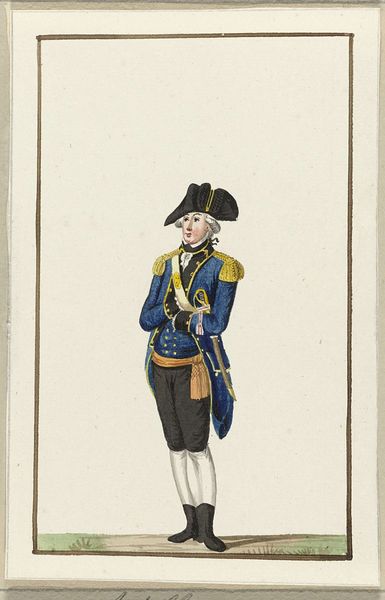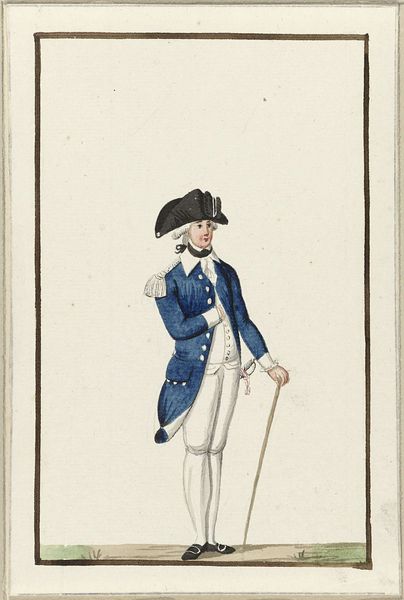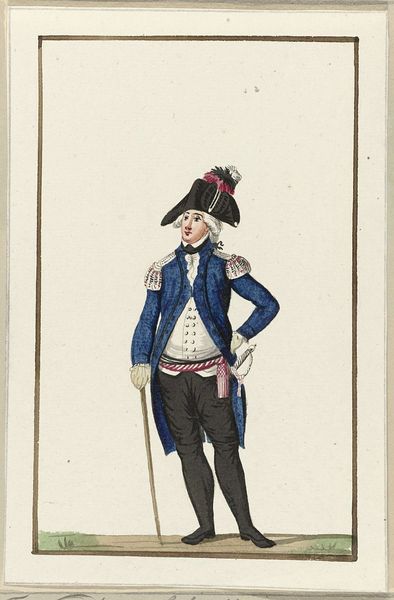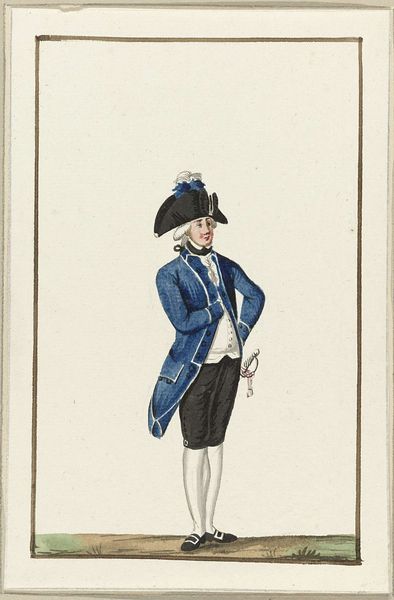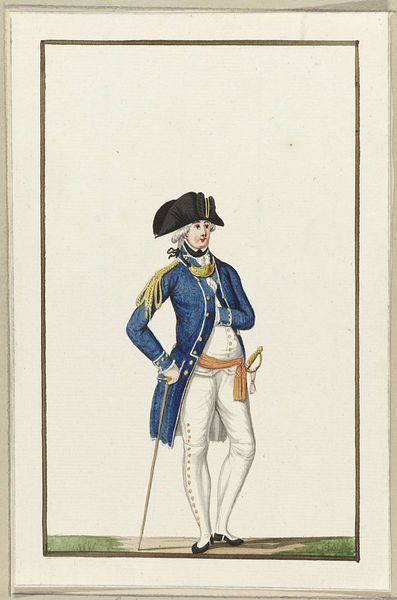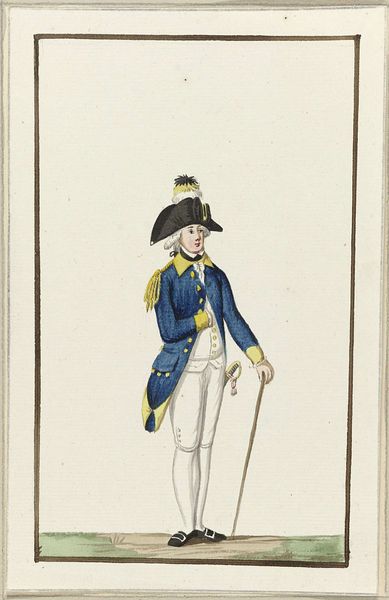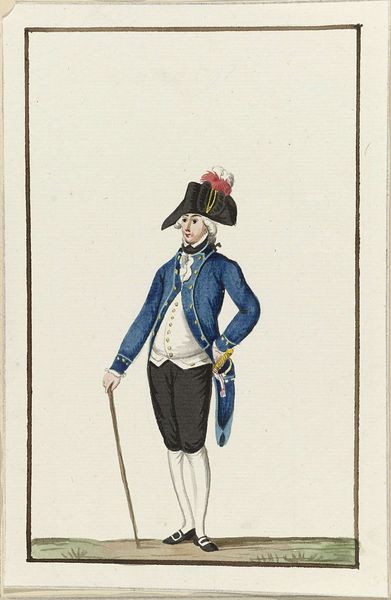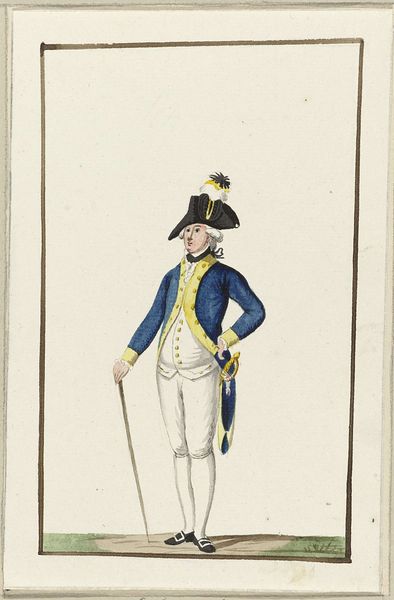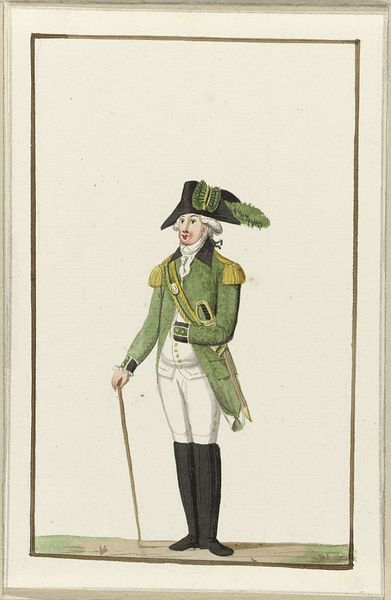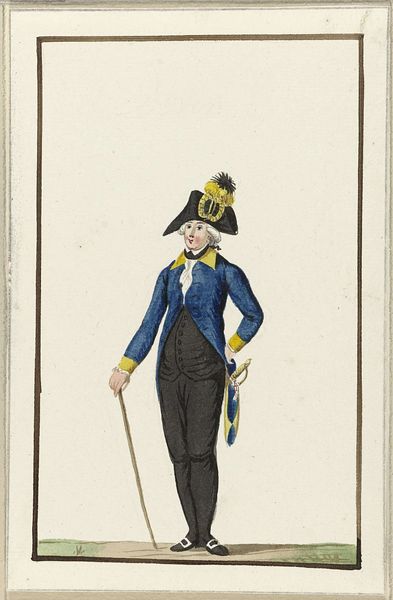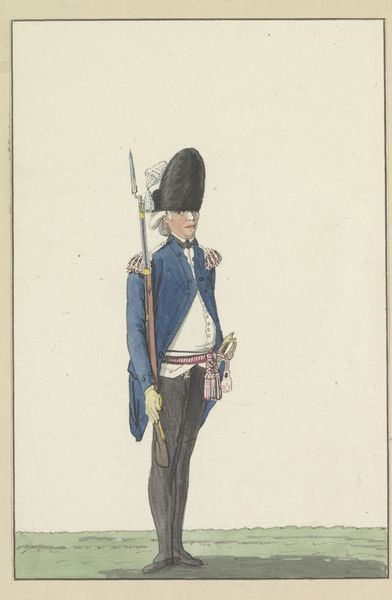
drawing, paper, watercolor
#
portrait
#
drawing
#
neoclacissism
#
paper
#
watercolor
#
historical fashion
#
sketchbook drawing
#
watercolour illustration
#
history-painting
Dimensions: height 205 mm, width 135 mm
Copyright: Rijks Museum: Open Domain
Editor: Here we have "Montering van het Utrechtse Defensiewezen, ca. 1787," an anonymous watercolor and pen drawing on paper from around 1787. It strikes me as a fairly straightforward, even subdued, depiction of military dress. What do you see in it? Curator: Well, on the surface, yes, it seems like a simple illustration. But let’s unpack what this image might represent within its historical and social context. Late 18th-century Utrecht was a society on the cusp of dramatic change. What social hierarchies are being reinforced through this highly detailed portrayal of military attire? Editor: That’s interesting. So, beyond just documenting the uniform, it’s also reinforcing a power structure? Curator: Precisely. The meticulous rendering of each button, each plume, speaks to the importance of appearance in maintaining social order. The Dutch Patriot movement was challenging the established order, advocating for citizen militias. Does this image align itself to that movement? Whose vision of order is reflected here and for whom was the illustration likely produced? Editor: I see. So this isn’t just about clothing; it’s about the social and political tensions of the time. But how does something as seemingly straightforward as this portrait speak to gender or race? Curator: Consider the historical exclusion of women from military power and public life. The focus on male militarism normalises a gendered view of power. As for race, this image participates in a broader Western visual culture that frequently omitted or marginalized non-white bodies, upholding colonial structures of dominance. Editor: That’s really eye-opening. I hadn't thought of analyzing it from those perspectives. I’ll definitely keep those considerations in mind moving forward. Curator: Indeed, reflecting on such issues empowers us to connect historical art with present-day social struggles.
Comments
No comments
Be the first to comment and join the conversation on the ultimate creative platform.
